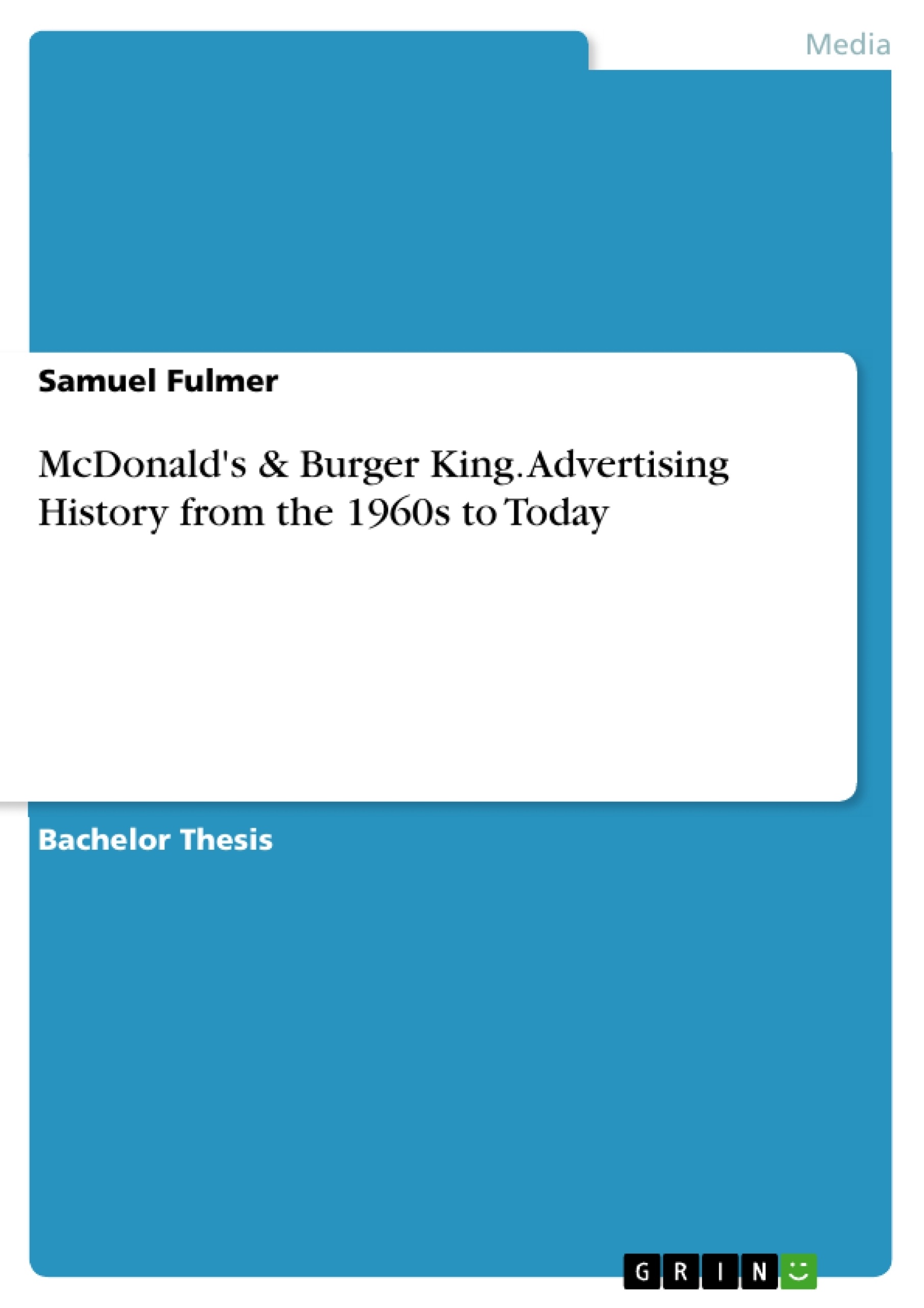This thesis will mainly look at two fast food restaurants, McDonald’s and Burger King, and will look at several advertisements from the 1960s to today. It will analyze the advertisements in terms of linguistic structures and will look at how advertisements have developed over the decades.
They are in our everyday life, on our phones when we look for a new app to install, on television while watching our favorite show, on our notebooks when we check our emails, or even when we walk down the street to get our morning coffee—advertisements are everywhere and one cannot escape or ignore them. Yet, as much as pop-ups, billboards and commercial breaks crowd our lives, in a way, they do not bother us at all, and that is the cunning beauty of advertising. It should get the point across, making us aware of something, telling us about a new product, convincing us to purchase an item, by subtly trying to persuade us that we need it when in reality we do not, whatever it is.
Advertisements can come in many forms and genres, they can be a poem, they can be a little short story, a catchy jingle, or just a picture; whatever form they might take, the message of persuading the consumer to buy the advertised product makes this accumulation of genres a genre in itself. It, moreover, is important to mention that whos and wheres of advertising are factors that have to be taken into consideration when drafting an advertisement for a product. What is the product and who could benefit from it? Where should the advertisement to the product appear so it can be easily seen by the target group? How can the features of the product be made easy to read and easy to understand, and furthermore and more importantly, urge the target group to purchase it?—here is where language comes into play.
Table of Contents
- 1 Introduction
- 2 Histroy of Advertising, the Diachronic Perspective and Methods
- 3 Analysis
- 3.1 McDonald's
- 3.2 Burger King
- 3.3 Other Fast Food Restaurants
- 4 Comparison: McDonald's & Burger King
- 5 Conclusion: the Contemporary State and the Future of Advertising
Objectives and Key Themes
This thesis aims to analyze the history of advertising for two fast food restaurants, McDonald's and Burger King, from the 1960s to the present day. It will explore how the advertisements have evolved over time in terms of linguistic structures and their development across decades.
- The evolution of advertising language and techniques across decades.
- Linguistic features and persuasive strategies employed in fast food advertisements.
- The role of social trends and target audience in shaping advertising campaigns.
- The impact of media on advertising, including print, radio, television, and film.
- A comparison of McDonald's and Burger King advertising approaches and strategies.
Chapter Summaries
- Chapter 1: Introduction
This chapter introduces the topic of advertising and its pervasive presence in modern life. It discusses the various forms and genres of advertising and the importance of persuasion and language in creating effective advertising campaigns.
- Chapter 2: History of Advertising, the Diachronic Perspective and Methods
This chapter explores the historical evolution of advertising from antiquity to the present day. It discusses the different eras of advertising, including the non-industrial, pre-industrial, and industrial phases. The chapter highlights the changing language and design styles used in advertisements over time, emphasizing the transition from non-petitionary to petitionary approaches. It also introduces the concepts of diachronic and synchronic research methods in studying advertising history.
- Chapter 3: Analysis
This chapter delves into the analysis of advertisements for McDonald's and Burger King. It will examine the linguistic structures and persuasive techniques used in the ads, shedding light on their development over decades.
- Chapter 4: Comparison: McDonald's & Burger King
This chapter will compare the advertising approaches and strategies employed by McDonald's and Burger King. It will analyze similarities and differences in their messaging, linguistic techniques, and target audiences.
Keywords
This thesis focuses on the key concepts of fast food advertising history, linguistic structures, persuasive techniques, social trends, target audience, media influence, and the comparative analysis of McDonald's and Burger King advertising strategies.
- Quote paper
- Samuel Fulmer (Author), 2015, McDonald's & Burger King. Advertising History from the 1960s to Today, Munich, GRIN Verlag, https://www.grin.com/document/463382




